Top 10 coastal castles
Explore the most intriguing castles on our shores, from defensive towers built by a conqueror to picturesque romantic ruins
By Dave Hamilton
For over 1,500 years, forts and castles have protected these shores from the constant threat of invasion by sea. Today, we remain intrigued by their long and bloody histories and evocative crumbling walls. Here are 10 of the most captivating coastal castles.
1. Dunluce, Country Antrim
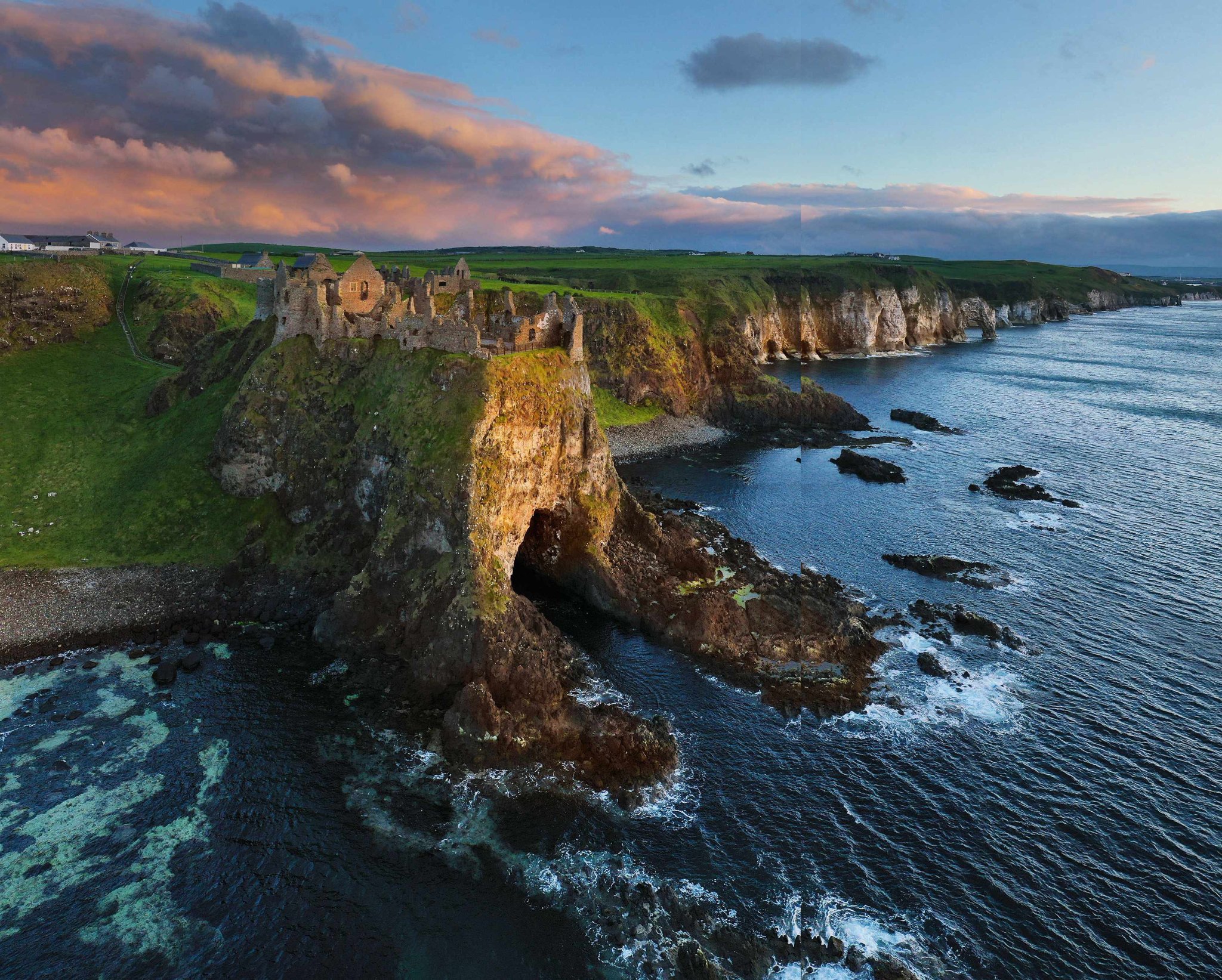
With tussocks of tough, emerald-green coastal grass creeping up its grey weatherworn walls, it’s hard to tell where the ruins of Dunluce begin and the basalt cliffs it sits upon end.
This rugged yet unarguably romantic castle on the Antrim coast has inspired many in the creative industries, with the ruins cropping up across all kinds of popular culture. Music fans may recognise it from the inlay gatefold of Led Zeppelin’s platinum album Houses of the Holy, while fantasy buffs might just be able to make it out as the basis for the CGI-created Castle Greyjoy in the hit series Game of Thrones. However, it was CS Lewis, who grew up in the area, who was most moved by the crumbling fortress – it’s thought he based his capital city of Narnia, Cair Paravel, on the castle.
The Irish nobleman and settled Norman knight Richard Óg de Burgh – father-in-law of Robert the Bruce – first built a castle here in the 13th century. By 1513, the McQuillan clan, rulers of “the Route”, a medieval territory on the north-east coast of Ulster, had become the first notable residents of Dunluce. Despite constructing two large drum towers, the McQuillans lost the castle to the MacDonnells in the 16th century, following two bloody battles. Towards the end of that century, Somhairle Buidhe MacDonnell (‘Yellow-haired Sorley’, or ‘Sorley Boy’) took command of the castle and set about consolidating power in the region. With its strategic position overlooking the Scottish mainland and the Inner Hebrides, in times of trouble Sorley could light a beacon near the castle to call for help from mercenaries in Islay or Kintyre.
You cross into the castle via a narrow footbridge marking the location of the former drawbridge. From here, take a guided tour or use one of the multilingual headsets. There are archeological exhibits and a gift shop on site and you’ll find a small café in the carpark.
FURTHER INFORMATION
Dunluce Castle is open daily from 9.30am–5pm. Adult entry costs £6. discovernorthernireland.com
2. Dartmouth, Devon
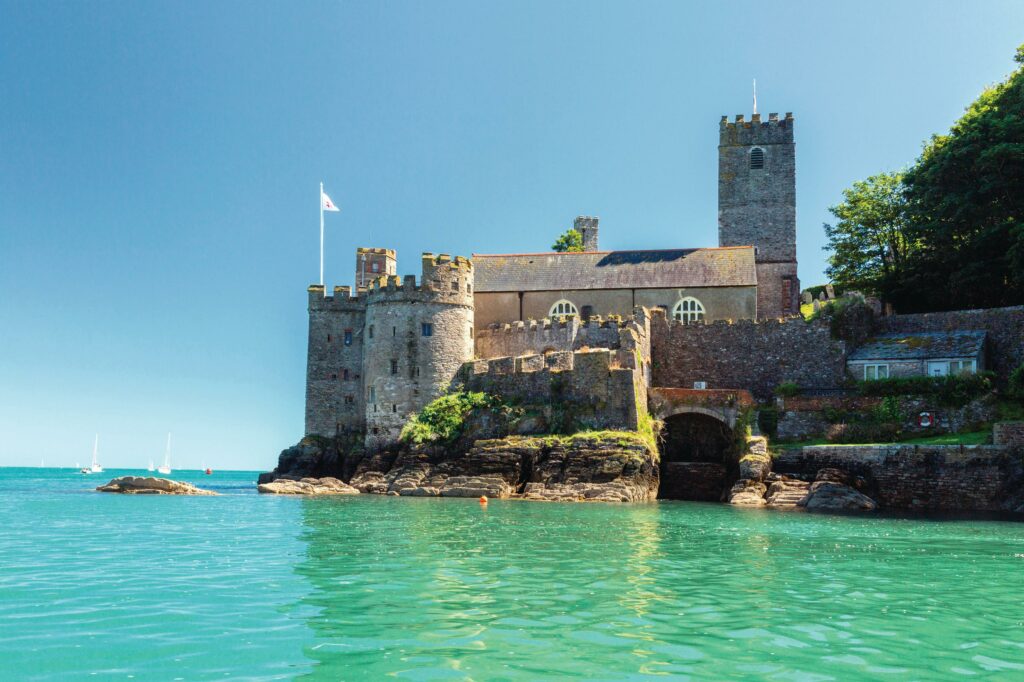
At the seaward end of the long winding Dart estuary, on top of a rocky promontory, sits the small but perfectly formed Dartmouth Castle. There are many parts to the castle, including the oldest – asection of wall and tower belonging to the original building, built under instruction of John Hawley in 1388 to protect English shores from French attack. Although Hawley’s name is not prominent in the history books, it is thought that this alleged pirate, local MP and Mayor of Dartmouth may have been the inspiration for the colourful character of Shipman, subject of one of Chaucer’s Canterbury Tales.
As the threat of French invasion grew in the late 15th century, an artillery tower – the first of its kind with the power to sink incoming ships – was constructed at Dartmouth. Other defences included a huge 250m iron chain, which could be stretched across the harbour to stop enemy ships.
The castle is best visited in summer by taking the ferry down the estuary, catching glimpses of grey seals as you pass the cobbled seafront and fort at Bayard’s Cove.
FURTHER INFORMATION
Open daily 10am–5pm until 5 Nov. Adult entry costs £8.60. english-heritage.org.uk
3. Conwy, Clwyd

In the late 13th century, when Edward I ordered the building of a castle on the site of the Cistercian Aberconwy Abbey of Saint Mary, he did so for far more than defensive reasons. The abbey was the resting place of Llywelyn ap Iorwerth, or Llywelyn the Great, King of Gwynedd and Prince of the Welsh. Conwy Castle was one of many to be built in Wales at the time and all were a deliberate attempt to subdue the Welsh, asserting the king’s dominance in the newly conquered region.
The main castle building sits within much larger defences. These include a line of walls and towers more then 1.3km long, which enclose the old town. The total cost of both the walls and the castle was said to be £15,000, scarcely enough for a kitchen extension today, but in Edward’s time the equivalent of tens of millions of pounds. Despite the cost and the size of the project, it took no longer than four years, between 1283 and 1287, to construct both the castle and the town walls.
Conwy is exceptionally well preserved and one of the most complete castles in the country. A UNESCO World Heritage Site, it boasts stunning views over Eryri (Snowdonia). Visitors can walk up its 700-year-old towers, along the high curtain walls, explore the keep and take in its set of complete medieval apartments.
During the summer, travel back in time with the official resident court jester Erwyd le Fol, who entertains crowds just as he would have done at the medieval court hundreds of years ago.
FURTHER INFORMATION
Open daily (closed 24–26 Dec and 1 Jan). Adult entry costs £11.70. cadw.gov.wales
4. Eilean Donan, Highlands
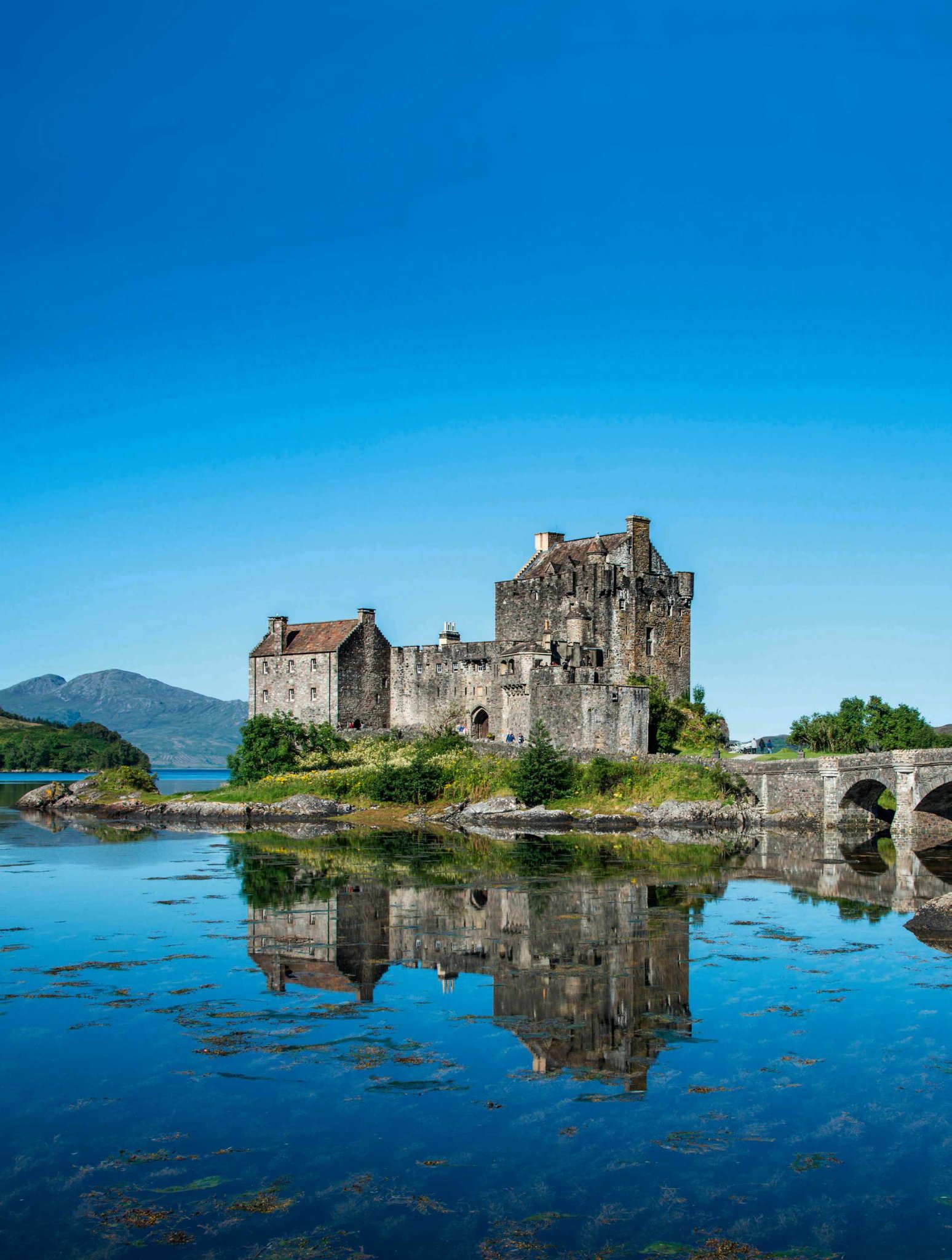
Eilean Donan means the Island of Donan in Scots Gaelic. Its name comes from Saint Donnan of Eigg, who set up a chapel on the island in the 6th century.
Throughout the Middle Ages, large parts of Western Scotland and the Scottish Islands became the target of Viking raiders. Positioned on a tidal island, at the meeting point of three lochs and serving as a gateway between the Isle of Skye, Inner Hebrides and the north-west Highlands of Scotland, Eilean Donan held a perfect defensive position against any would-be Viking marauders. Yet it wasn’t until the 13th century, during the reign of Alexander II when the sea was the main highway, that a castle was built on the tiny island to help consolidate resistance against the Scandinavian invaders.
A picture-postcard castle, Eilean Donan has been used in many films, including Elizabeth: the Golden Age and the James Bond film The World Is Not Enough. Fans of 1980s fantasy film Highlander may also recognise the castle as the seat of Clan MacLeod and home of star Christopher Lambert’s character Connor MacLeod.
The present-day castle is a modern restoration, constructed by architect George Mackie Watson between 1912 and 1932. There is a fish and chip shop on site along with a food hall and café. It’s open to visitors all year, with the exception of January, and couples can hire the castle as a wedding venue.
FURTHER INFORMATION
Open daily until 22 Dec (closed in Jan). Adult entry costs £11. eileandonancastle.com
5. Harlech, Gwynedd
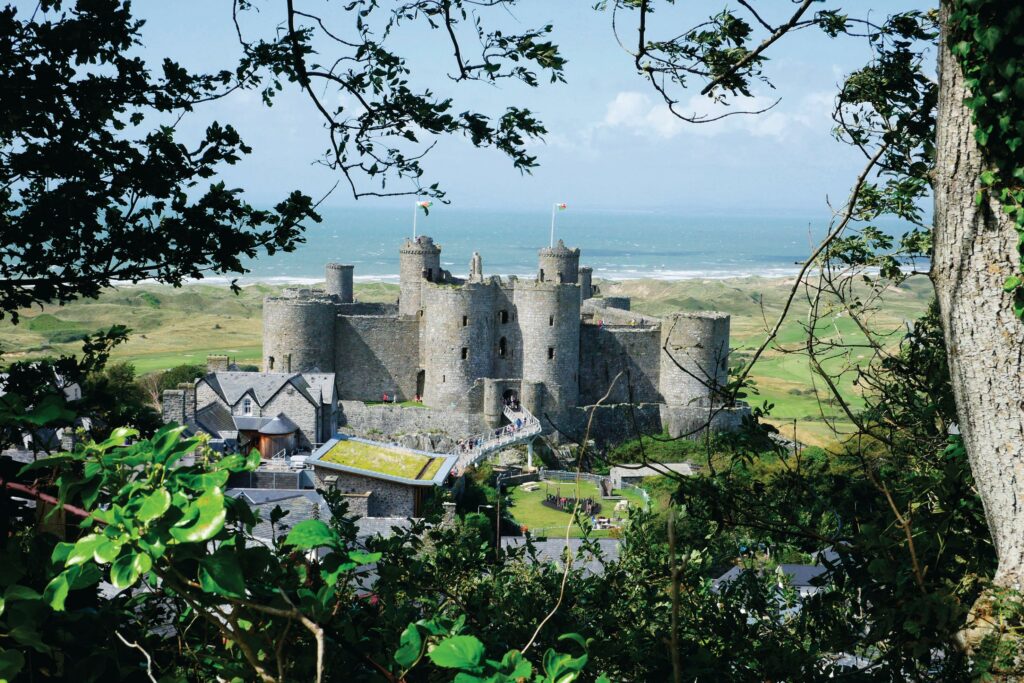
Standing above a long sandy beach, overlooking the mountains of Eryri (Snowdonia), Harlech is unarguably the most romantic of all Edward I’s castles. Along with Conwy, Caernarfon and Beaumaris, it is a designated UNESCO World Heritage Site and one of Edward’s Iron Curtain of fortresses, built to subdue a local population who fiercely resisted English control.
In 1404, the castle fell to the very rebels it was built to supress, as Owain Glyndŵr, the last native Prince of Wales, won the fortress as part of his uprising against English rule. Owain held the castle for five years, along with large parts of the country, establishing an internationally recognised Welsh state and forming an alliance with Charles VI, the French king. Harlech became the charismatic prince’s main residence, but by February 1409 Owain’s dreams of a free Wales were thwarted as the English retook the castle and Owain fled to the mountains. Access the castle via a building that houses the café and an immersive, cinematic history of the site.
FURTHER INFORMATION
Open daily (closed 24–26 Dec and 1 Jan). Adult entry costs £8.70. cadw.gov.wales
6. Tintagel, Cornwall
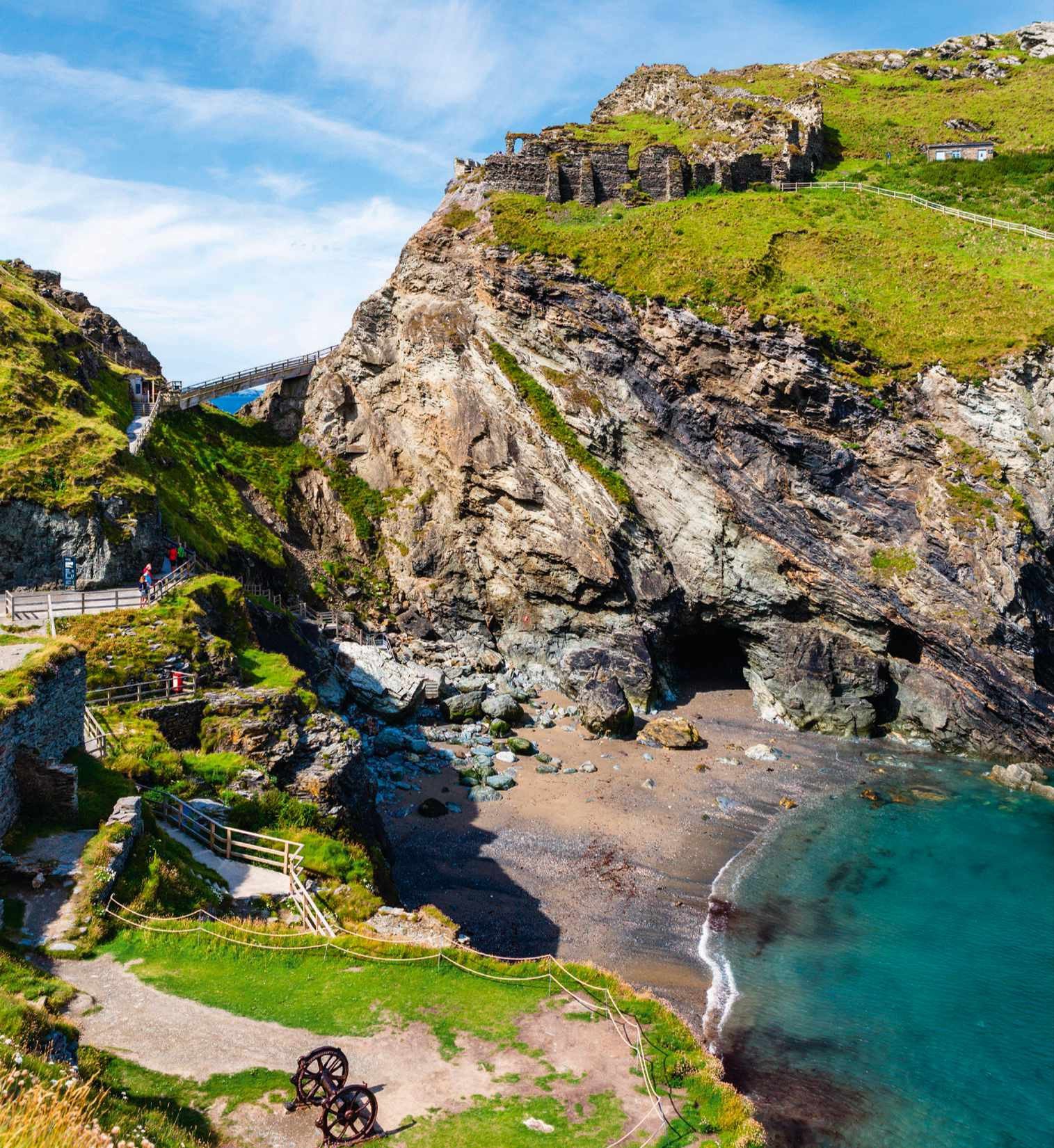
Exposed on a rocky outcrop, with the raging Atlantic Sea below and the wide-open Cornish sky above, the very elements that make Tintagel a special place to visit have reduced it to a crumbling, romantic ruin.
Despite its ruinous state, the castle sees nearly a quarter of a million visitors a year, attracted in part by its associations with King Arthur, the legendary king of the Britons. Geoffrey of Monmouth, a 12th-century cleric, first cited Tintagel as the birthplace of Arthur in his book Historia Regum Britanniae, translated as The History of the Kings of Britain, but historians have yet to confirm the story. Recent archaeological evidence suggests that the real Arthur may have lived 200km to the north-east in the border town of Shrewsbury.
Centuries before Geoffrey’s time, between the 5th and 7th century AD, Tintagel was a boom town for Cornish tin. Goods from all over the world found their way here. To give an idea of the scale of this ancient trading hub, more fragments of amphora – Roman vessels used for wine and oil – have been found in and around Tintagel than in all of Britain combined.
Today, visitors can cross the impressive, new, awardwinning cantilevered 68.5m bridge spanning the gorge over to Tintagel Island to visit the ruin and the caves below, which are said to be the former home of the legendary wizard Merlin. The nearby village is a bustling hub of gift shops, cafés and pubs, while the site itself has two cafés and a gift shop.
FURTHER INFORMATION
Open daily until 5 Nov; Fri-Sun in Dec and Jan. Adult entry is £14.50. english-heritage.org.uk
7. Dover, Kent

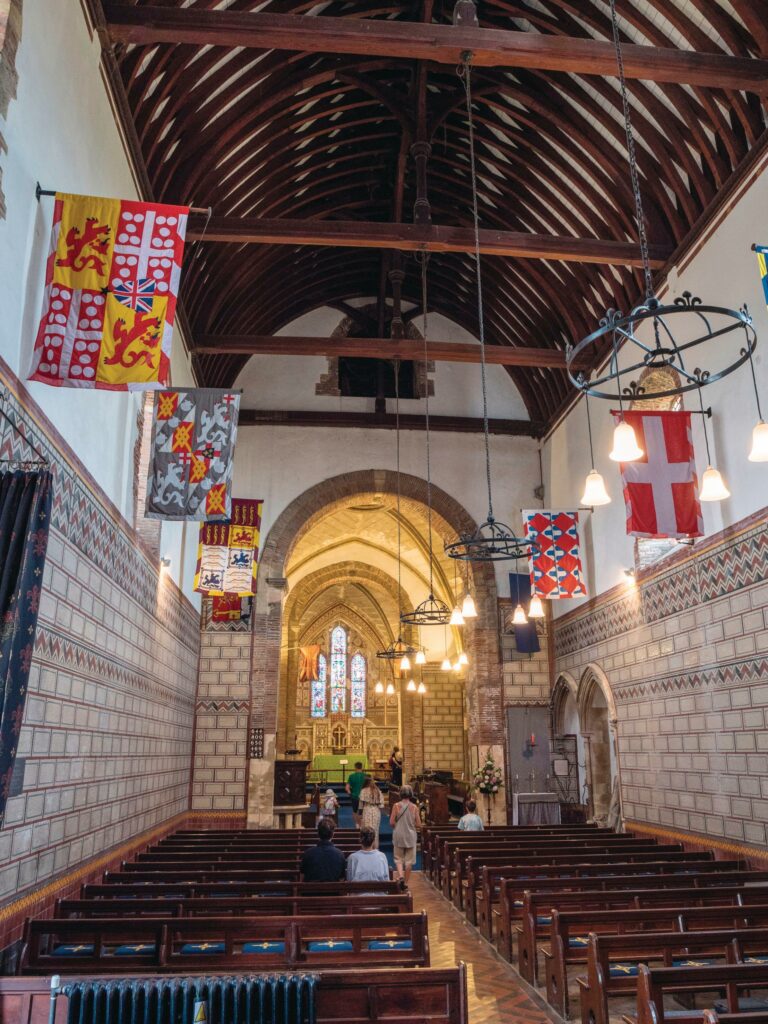
Positioned above the town of Dover and its famous white cliffs and with a commanding view of the harbour, Dover Castle began life as a motte-and-bailey fortress in the 11th century. Built under the instruction of William the Conqueror, it served to protect the narrowest point of the English Channel while acting as a show of power to any would-be invaders. Subsequent rulers rebuilt, fortified and modified the castle and its surrounds until it became the formidable fortress it is today.
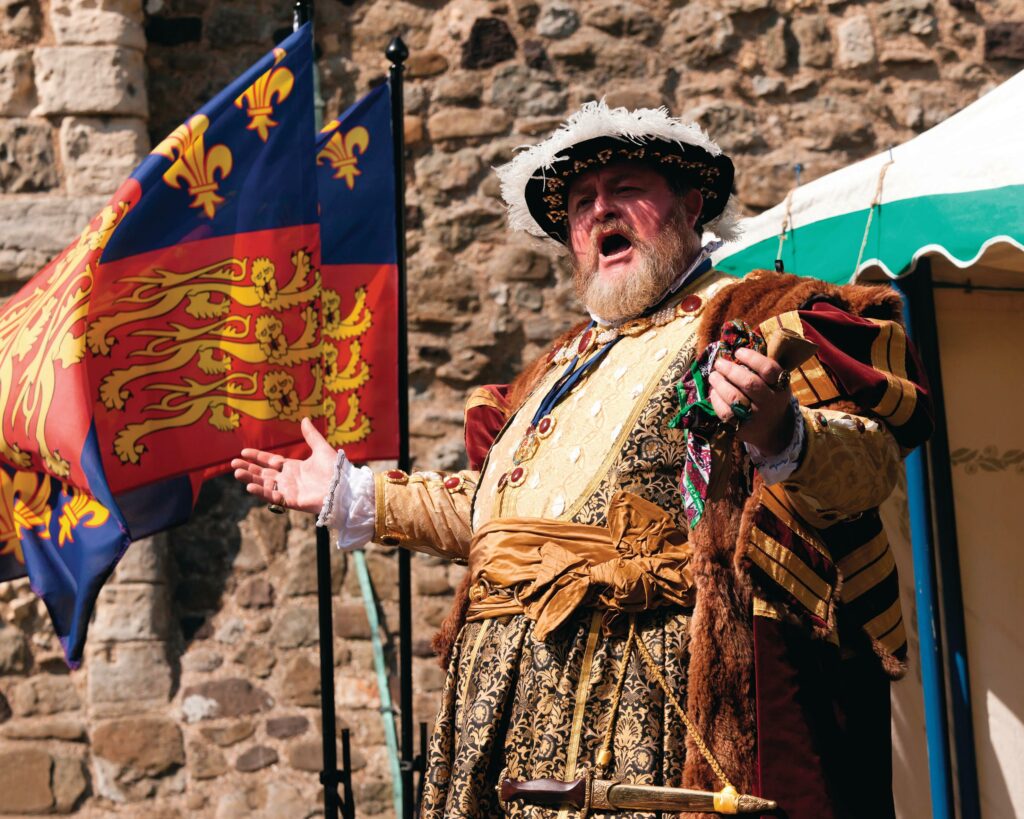
Following the castle’s great siege of 1216, Hubert de Burgh, a loyal supporter of King John, built an impressive network of tunnels under the fortress, allowing troops to intercept enemies to the north before they even made it to the main gate. In Napoleonic times, when the threat of invasion was always present, the tunnels were expanded and used as a barracks. Yet it was during the Second World War that the catacombs would play their most important role in history. The tunnels were expanded to incorporate a secret hospital and an allied base of operations. From here, Winston Churchill led Operation Dynamo, the evacuation of over 300,00 soldiers from Dunkirk.
Today, visitors can explore these tunnels and the underground hospital by joining one of the many fascinating guided tours. Above ground there are 32 hectares for kids to run around in and a picnic site. There’s also the Princess of Wales’ Royal Regiment Museum, the great tower to explore and an excellent café.
FURTHER INFORMATION
Open daily until 5 Nov; weekends only in winter. Adult entry costs £20.90. english-heritage.org.uk
8. Dunnottar, Aberdeenshire
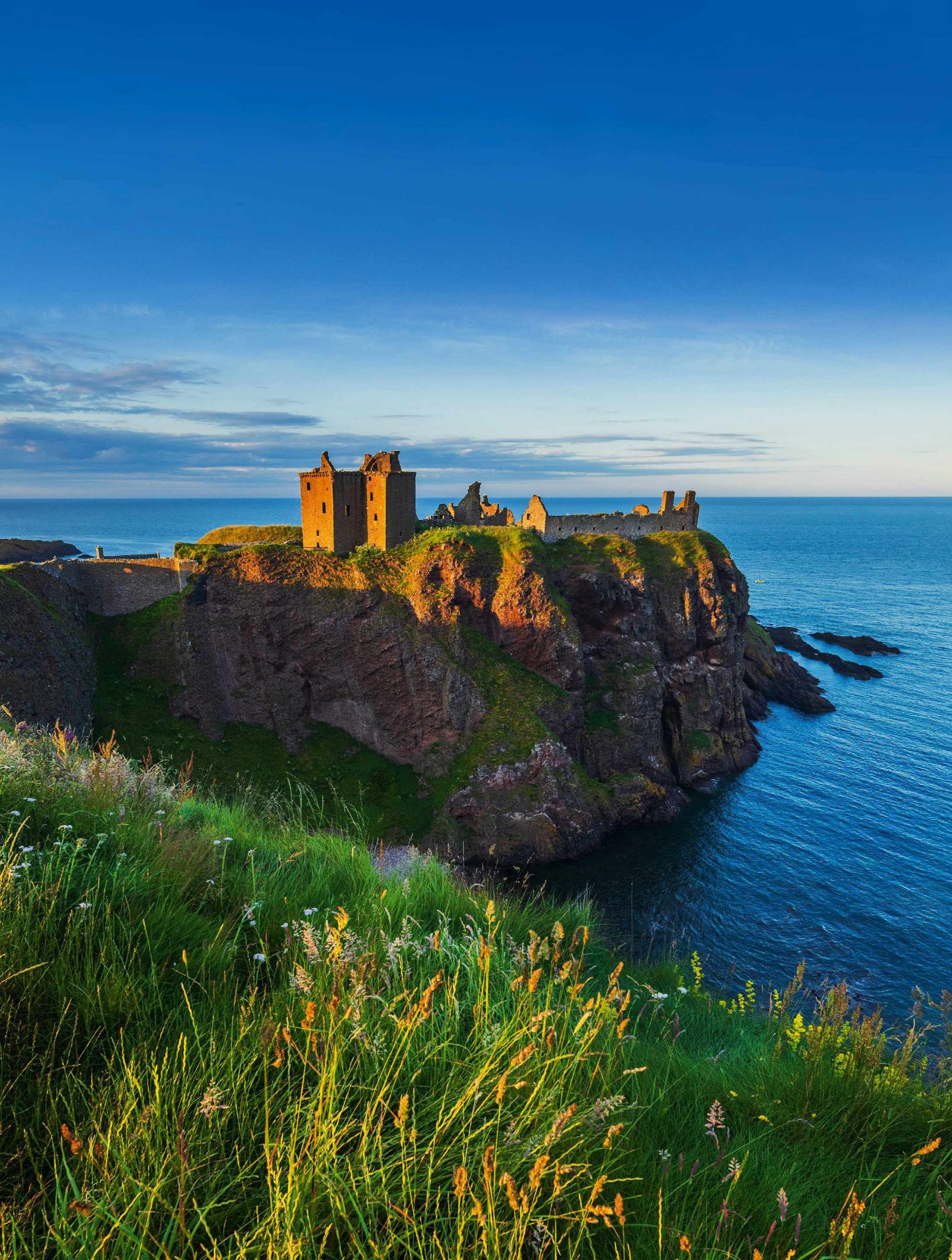
Surrounded on three sides by the raging North Sea on a rocky, 150m-high clifftop, Dunnottar Castle is an unequivocally grand and dramatic ruin.
A fort ruled over by King Donald II stood on the site in the 9th century – it’s often thought that he was killed here by Vikings. Other sources claim he could have fallen foul of Gaels, not
Vikings, or even that he was murdered elsewhere, at the town of Forres on the Moray coast. In 1651 the castle’s defenses were put to the test again as Cromwell’s Parliamentarian soldiers, determined to take the castle, marched to Dunnottar. Despite the castle being defended by just 70 men, the bloody siege lasted for eight months. Suffering from hunger and disease, the castle’s Royalist defenders eventually surrendered.
Joined to the mainland by a narrow winding path, the walk to the castle feels like an adventure in itself; it is from the path that many photographers chose to capture the shifting light as it dances across the walls. There is plenty to see and visitors can take their time strolling around the ruins, reading its many information boards. Ice creams, hot drinks and snacks are available in the car park kiosk. Combine a castle visit with a walk to and from the town of Stonehaven for a great day out.
FURTHER INFORMATION
Open daily (closed 25–26 Dec and 1–2 Jan). Adult entry costs £10.50. dunnottarcastle.co.uk
9. Caernarfon, Gwynedd
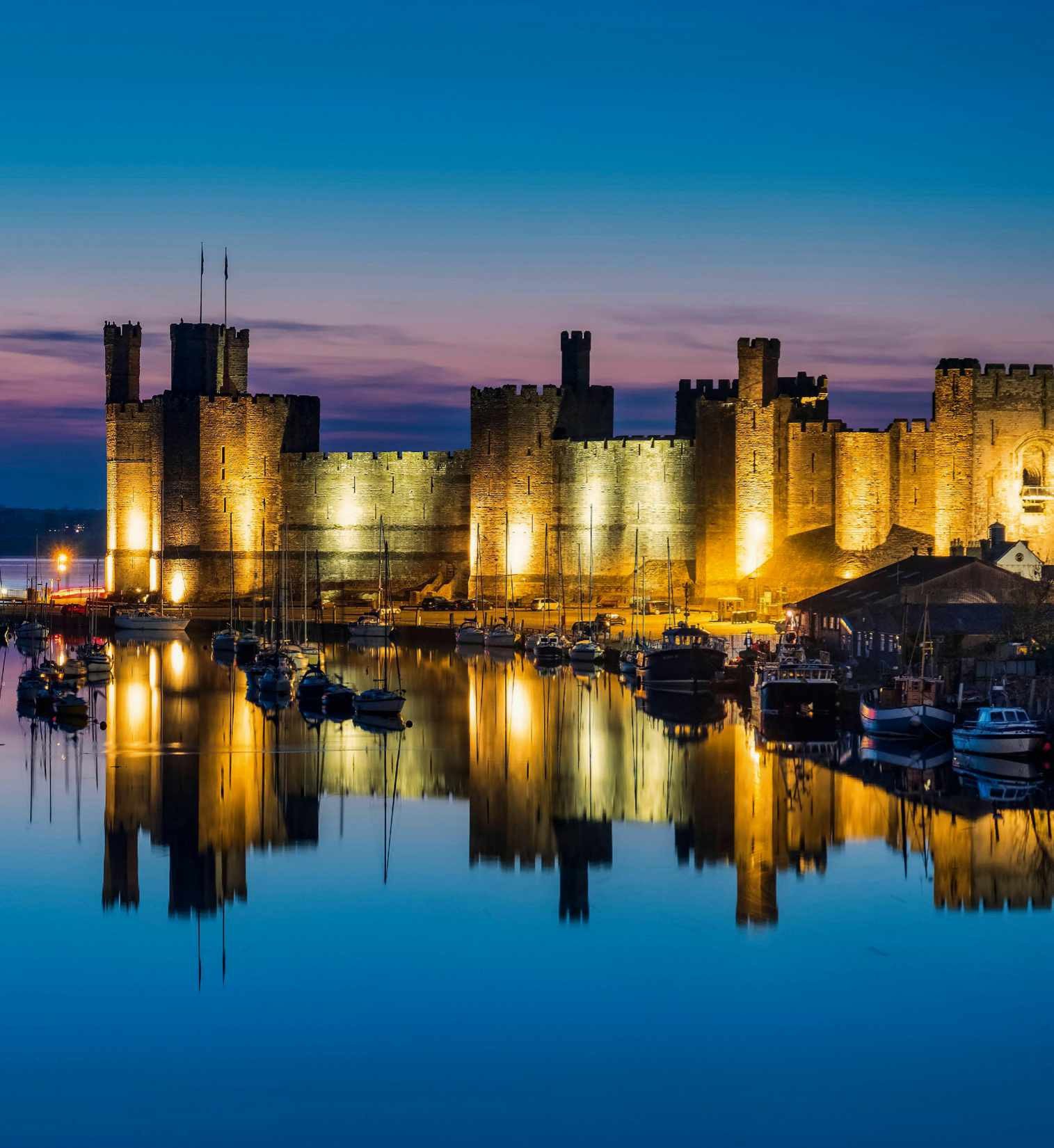
Built in the 13th to 14th centuries, imposing Caernarfon Castle was designed to be a show of Edward I’s imperial strength. Constructed on the site of a former Roman fort, it was as much a royal palace as it was a stronghold. With its soaring pinkish-red walls and colossal towers made from local rhyolite, it would have been one of the most impressive constructions of the Middle Ages. It took 47 years to build the fortress, harbour and the walls, costing an estimated £25,000 – enough to buy 30,000 horses at the time.
Such a grand construction made the castle a target for rebel forces. In 1294, the unfinished castle, with its temporary wooden fortifications, was overrun by Madog ap Llywelyn, a fierce Welsh leader and proclaimed Prince of Wales. Madog managed to hold the castle for a year until the English retook it in 1295 and completed its construction.
Centuries later, the defensive structure was put to altogether different use during the Second World War. London’s National Gallery used the castle as an emergency storage facility when the capital was under German bombardment.
Visiting Caernarfon, with its many towers and staircases, can be something of a workout, but the many information boards, exhibitions and the Royal Welch Fusiliers Museum (rwfmuseum.org.uk) make this a great day out. There are self-guided audio tours, as well as many guided tours each day. There’s also a small café on site.
FURTHER INFORMATION
Open daily (closed 24–26 Dec and 1 Jan). Adult entry costs £12.50. cadw.gov.wales
10. Bamburgh, Northumberland
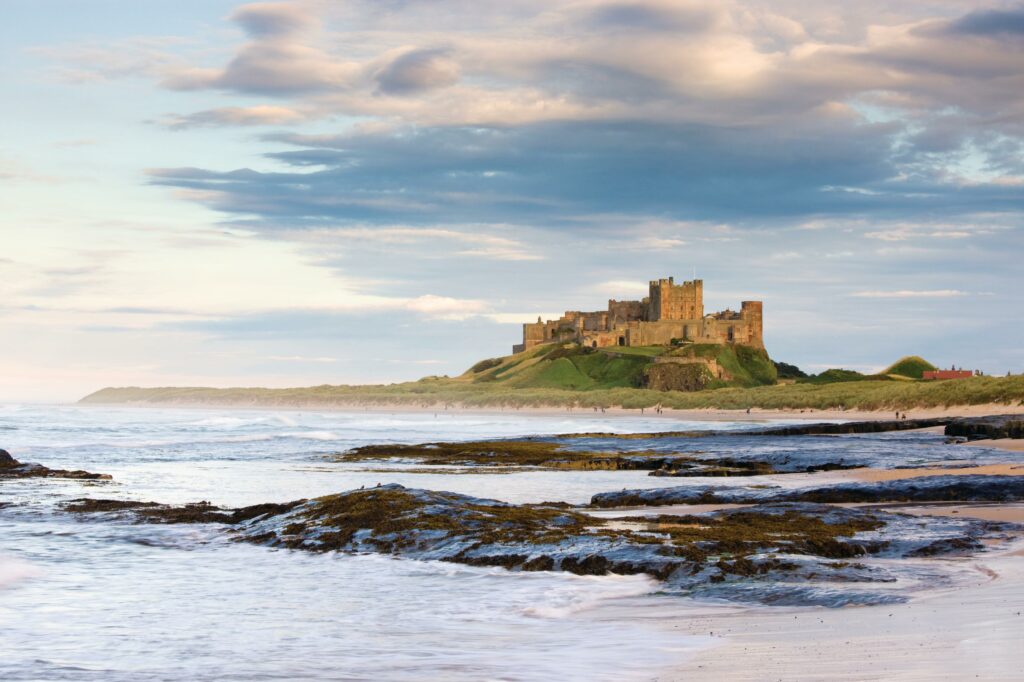
Standing on top of an outcrop of volcanic rock 150 feet above a long sandy Northumberland beach, Bamburgh is one of the most iconic castles in England. Starting life as a Celtic fort known as Din Guarie, it was captured by Ida of Bernicia, also known as Ida Flame Bearer, a powerful Anglian warrior whose descendants founded the kingdom of Northumbria. Chronicles of the time suggest that the castle, probably a wooden construction, may have been surrounded by a defensive hedge before its defensive wall was built.
Its proximity to the North Sea made it a target for Viking raiders, who levelled the castle in the late 10th century. Then, during the 11th century, the incoming Normans saw a strategic opportunity at Bamburgh, building much of the castle we see today to guard the coast from further attacks. Bamburgh was restored in Victorian times by industrialist Sir William Armstrong. Today, his descendants open the castle to the public; marvel at ornately decorated chambers, take in the museums, or enjoy lunch in the café.
FURTHER INFORMATION
Open 10am–4pm daily until 5 November; adult entry is £15.50. bamburghcastle.com